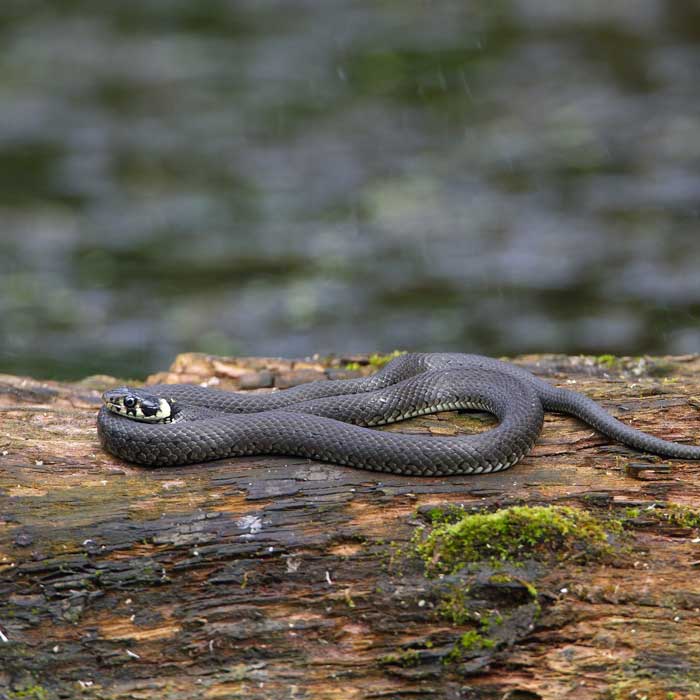
grass snake
The grass snake, one of the most common snake species in Europe, is known for its adaptability and its important ecological balance. This fact sheet provides a detailed overview of the biology and ecology of the grass snake and highlights the importance of its protection and conservation in natural habitats.
grass snake Products
-
Animal display Grass snake
Regular price From 19,90€Regular priceUnit price / per -
Animal display grass snake - outdoor set
No reviewsRegular price 27,70€Regular priceUnit price / per
Profile: grass snake
-
Scientific classification
- Class: Reptilia (reptiles)
- Order: Squamata (squamata)
- Family: Colubridae (snakes)
- Genus: Natrix
- Species: N. natrix (grass snake)
-
Physical characteristics
- Size: Average length of 60-100 cm
- Special features: Slender body, smooth scales, olive to grey base colouring with dark spots and stripes, characteristic whitish chin band.
-
Habitat and distribution
- Common regions: Europe, parts of Asia
- Habitat: Water bodies in a variety of habitats such as wetlands, river banks, lakes, but also in gardens and parks.
-
Nutrition
- Diet: Carnivore
- Typical food: Amphibians such as frogs, toads, newts, occasionally small fish and rodents.
-
Reproduction and lifestyle
- Mating season: Spring
- Reproduction: Egg laying from June to July, 10-40 eggs per clutch
- Brood care: Females lay their eggs in decaying plant materials, no brood care after hatching.
- Social structure: Solitary outside of the mating season, often found near bodies of water.
-
Lifespan and protection status
- Life expectancy: Up to 15 years in the wild
- Endangered status: Not threatened, but local populations may be affected by habitat loss and road traffic.
- Conservation measures: conservation and protection of wetlands, creation of migration corridors, measures to prevent habitat fragmentation.


